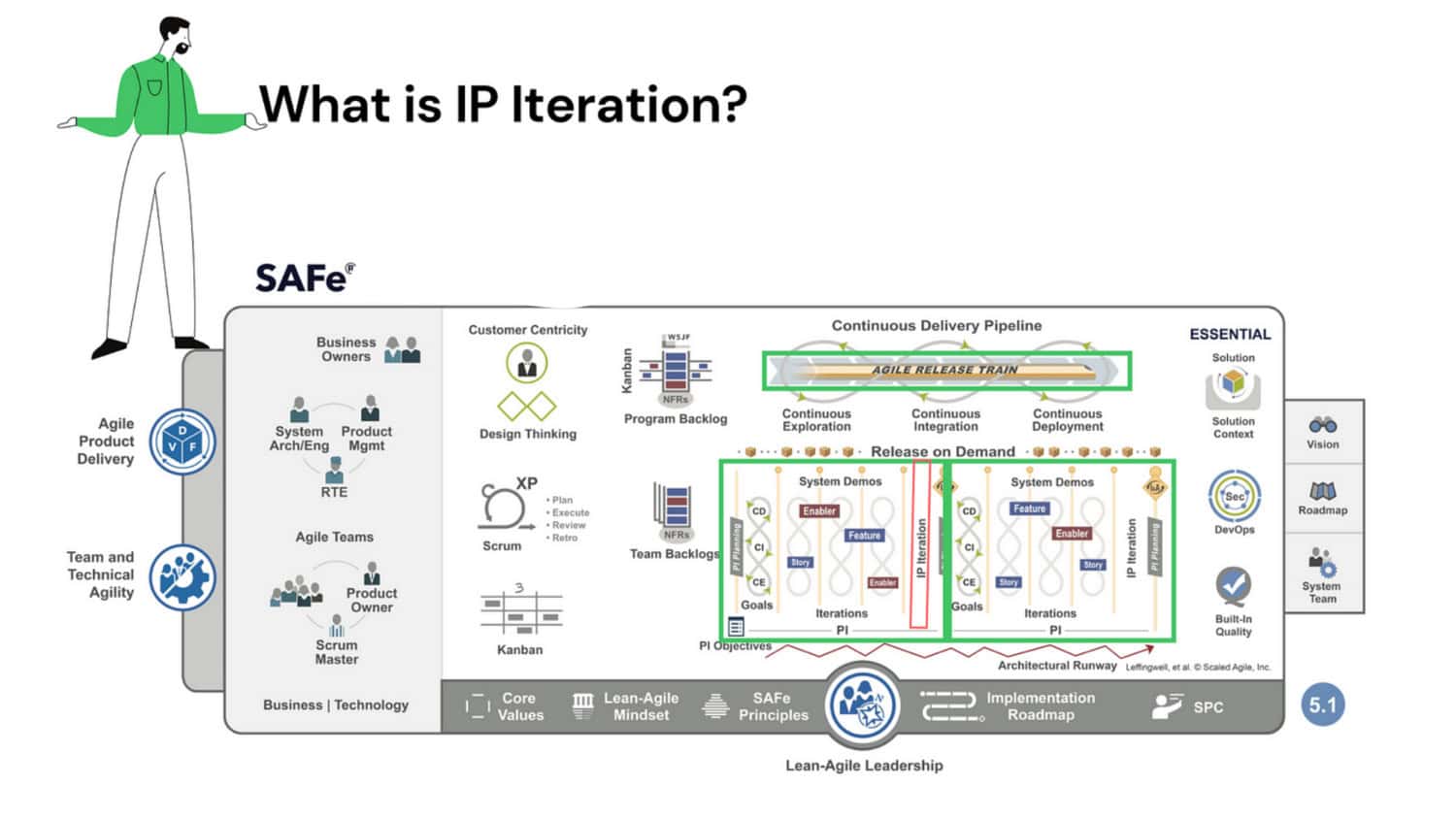In the rapidly evolving business landscape, staying ahead necessitates a blend of innovation and meticulous planning. Welcome to the world of Innovation and Planning IP Iterations, a fundamental concept for agile teams aiming to optimize their processes. This article provides a comprehensive exploration of this iterative approach, shedding light on its significance, benefits, and potential pitfalls.
Innovation and Planning IP Iterations involve a recurring process that combines innovative thinking with strategic planning. This approach is designed to enhance agility, adaptability, and competitiveness within modern businesses. It addresses the challenge of integrating innovation into planning and execution, ensuring organizations remain responsive to changing market demands.
By delving into this article, you’ll gain insights into how Innovation and Planning IP Iterations can reshape your business strategies. Discover the advantages it offers in terms of faster adaptation, improved product development, and enhanced customer satisfaction. Stay informed and equipped with the knowledge to navigate the dynamic business environment effectively.
Read also: How To Iterate Through Nested Dictionary In Python?
Table of Contents
Defining Innovation and Planning IP Iteration
At its core, an Innovation and Planning IP Iteration is a designated timebox within an agile development cycle, where teams focus on strategic innovation, planning, and preparation for upcoming work.

Unlike regular iterations that primarily center on the development and delivery of features, Innovation and Planning IP Iterations prioritize activities that contribute to the long-term vision and health of the project.
These activities encompass brainstorming new ideas, refining product roadmaps, addressing technical debt, and enhancing team collaboration.
Check this out: What Is The Purpose Of Iterations Goals?
Significance and Benefits
An Innovation and Planning IP Iteration is a pivotal element of agile methodologies, fostering an environment where immediate deliverables don’t solely measure progress.
This approach enables teams to allocate time for tasks that take a back seat in a rush to meet deadlines. The benefits are manifold:
Strategic Vision Enhancement
IP Iterations provide a breathing space to align the team’s efforts with the broader organizational strategy. During this period, teams can evaluate market trends, customer feedback, and emerging technologies to maintain product competitiveness.
Technical Debt Management
Neglecting technical debt can significantly hinder a project’s sustained success over the long term. IP Iterations permit teams to address these underlying issues, enhancing product quality, security, and maintainability.
Innovation Cultivation
In the hustle of sprint cycles, innovative project ideas might need to be revised. Dedicated IP Iterations encourage out-of-the-box thinking and the exploration of novel solutions, potentially leading to groundbreaking advancements.
Refined Planning
With a clean slate, teams can refine their planning and prioritize tasks more effectively. This, in turn, contributes to accurate estimations, smoother workflow, and reduced project risks.
Enhanced Collaboration
By fostering open discussions and knowledge sharing, IP Iterations bolster team cohesion. The dedicated time encourages cross-functional collaboration, where diverse perspectives converge for creative problem-solving.
When Should Agile Teams Make Time for Innovation?
The question of when to allocate an Innovation and Planning IP Iteration largely hinges on the nature of the project, the team’s dynamics, and the organization’s goals.

While there’s no one-size-fits-all answer, several scenarios warrant the incorporation of IP Iterations:
Project Kickoff
Commencing a project with an IP Iteration establishes a comprehensive foundation, enabling the team to clearly define direction, goals, and scope.
Read also: Innovative Ideas: Top Java Project Ideas For Final Year Project
Major Shifts
When the project encounters significant changes—such as shifting market demands, technology disruptions, or alterations in organizational strategy—an IP Iteration aids in adapting to the new landscape.
Periodic Review
Integrating IP Iterations at regular intervals, perhaps after sprint cycles, permits the team to periodically assess progress, adjust goals, and ensure alignment with the larger business strategy.
Mitigating Burnout
Constantly pushing for rapid feature delivery can lead to burnout among team members. IP Iterations provide breathing space, promoting work-life balance and preventing fatigue.
Unveiling the Innovation and Planning IP Iteration Anti-Pattern
However beneficial Innovation and Planning IP Iteration might be, there’s a potential pitfall that agile teams should be cautious of: the “Innovation and Planning IP Iteration Anti-Pattern.”
This occurs when teams merely pay lip service to the concept, treating it as an extended break or a time to catch up on unrelated tasks. Essentially, it devolves into a wasted opportunity rather than a strategic advantage.
Teams falling in Innovation and Planning IP Iteration anti-pattern might exhibit the following traits:

Superficial Planning
Rather than delving into deep planning and strategizing, teams might rush through the process, barely scratching the surface of what an IP Iteration can achieve.
Lack of Innovation
True innovation requires creative exploration and experimentation. Teams embracing the anti-pattern might stick to the status quo, failing to leverage the time for breakthrough ideas.
Disregard for Strategy
Neglecting the strategic aspect of IP Iterations can result in a misalignment between the project’s short-term actions and the long-term organizational goals.
Minimal Collaboration
Instead of using the time for robust discussions and cross-functional collaboration, teams might retreat to individual tasks, missing the chance to envision the project’s trajectory collectively.
Inconsistent Implementation
Treating IP Iterations as occasional occurrences rather than integral components of the development cycle directs to an inconsistent approach, eroding the potential benefits.
FAQs
How frequently should Innovation and Planning IP Iterations occur?
IP Iterations' frequency varies based on the project's needs and the team's rhythm. You can integrate at project kickoff, significant shifts, or regular intervals, such as every few sprints.
Can IP Iterations replace regular development iterations?
No, IP Iterations serve a different purpose. While regular iterations focus on feature development, IP Iterations emphasize strategic planning, innovation, and addressing technical debt.
What's the key to a successful IP Iteration?
Effective utilization is crucial. Teams must genuinely engage in strategic planning, foster innovation, and collaborate cross-functionally to maximize the dedicated time.
How can teams avoid the IP Iteration Anti-Pattern?
Awareness is the first step. Teams should recognize the potential pitfall and commit to utilizing IP Iterations for their intended purpose. Regular evaluations and a culture of openness can help steer clear of the anti-pattern.
Can IP Iterations be implemented in non-agile environments?
Absolutely. While IP Iterations align seamlessly with agile methodologies, you can adapt their principles to suit different project management approaches, provided there's a commitment to strategic planning and innovation.
Conclusion
Innovation and Planning IP Iterations embody the essence of agile thinking—flexibility, adaptation, and a focus on value. These designated timeboxes transcend the ordinary, allowing teams to innovate, strategize, and refine their course.
However, like any concept, their effectiveness hinges on proper implementation. Avoiding the Innovation and Planning IP Iteration Anti-Pattern ensures that teams genuinely harness the potential of these iterations, contributing not only to project success but also to the long-term growth and vitality of the organization.
Check this out: How To Stop Iteration Error Python | Python StopIteration Exception

